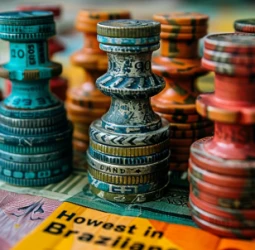In today's fast-paced world, unexpected expenses and financial emergencies are inevitable. Whether it's a sudden medical expense, a car repair, or a job loss, having a financial safety net can bring you peace of mind and help you navigate through these challenging times. This is where an emergency fund comes in – a dedicated savings account specifically for unforeseen circumstances.
Building an emergency fund is an essential aspect of personal finance. It acts as a buffer to protect you from falling into debt or using high-interest credit cards to cover unexpected expenses. It also provides a sense of security and gives you the confidence to handle any financial crisis that may come your way.
The first step in building an emergency fund is to set a realistic goal. Financial experts recommend having at least three to six months' worth of living expenses saved in your emergency fund. However, this number can vary depending on your personal circumstances, such as your job stability, dependents, and monthly expenses. It's crucial to assess your situation and determine how much you need to save to feel financially secure.
Once you have determined your emergency fund target, the next step is to start saving. Creating a budget and cutting back on unnecessary expenses can help free up some money to put into your emergency fund. You can also consider taking up a side hustle to generate extra income, which can be directly put towards your savings. Every dollar counts, so even if you can only save a small amount each month, it's a step towards reaching your goal.
It's essential to keep your emergency fund separate from your day-to-day expenses. This means opening a dedicated savings account and labeling it as your emergency fund. This will prevent you from dipping into it for non-essential expenses and help you track your progress. You can also opt for a high-yield savings account, which offers a higher interest rate, allowing your money to grow even when it's not being used.
While building an emergency fund, it's essential to prioritize your savings over other financial goals, such as saving for a vacation or a new car. Although these are desirable goals, having a financial cushion for emergencies should be your top priority. You can always redirect your savings towards other goals once your emergency fund is well-established.
Once you have successfully built your emergency fund, it's crucial to maintain it. This means replenishing the money you have used for unexpected expenses and making regular contributions to keep it at your desired level. As your income increases, you can also consider increasing the size of your emergency fund to meet your changing needs.
In conclusion, having an emergency fund is a crucial aspect of financial well-being. It provides a sense of security and can protect you from falling into debt during unexpected situations. Building an emergency fund may seem daunting at first, but with dedication and discipline, you can achieve your financial safety net. Start small, make it a priority, and watch your emergency fund grow over time.
Building an emergency fund is an essential aspect of personal finance. It acts as a buffer to protect you from falling into debt or using high-interest credit cards to cover unexpected expenses. It also provides a sense of security and gives you the confidence to handle any financial crisis that may come your way.
The first step in building an emergency fund is to set a realistic goal. Financial experts recommend having at least three to six months' worth of living expenses saved in your emergency fund. However, this number can vary depending on your personal circumstances, such as your job stability, dependents, and monthly expenses. It's crucial to assess your situation and determine how much you need to save to feel financially secure.
Once you have determined your emergency fund target, the next step is to start saving. Creating a budget and cutting back on unnecessary expenses can help free up some money to put into your emergency fund. You can also consider taking up a side hustle to generate extra income, which can be directly put towards your savings. Every dollar counts, so even if you can only save a small amount each month, it's a step towards reaching your goal.
It's essential to keep your emergency fund separate from your day-to-day expenses. This means opening a dedicated savings account and labeling it as your emergency fund. This will prevent you from dipping into it for non-essential expenses and help you track your progress. You can also opt for a high-yield savings account, which offers a higher interest rate, allowing your money to grow even when it's not being used.
While building an emergency fund, it's essential to prioritize your savings over other financial goals, such as saving for a vacation or a new car. Although these are desirable goals, having a financial cushion for emergencies should be your top priority. You can always redirect your savings towards other goals once your emergency fund is well-established.
Once you have successfully built your emergency fund, it's crucial to maintain it. This means replenishing the money you have used for unexpected expenses and making regular contributions to keep it at your desired level. As your income increases, you can also consider increasing the size of your emergency fund to meet your changing needs.
In conclusion, having an emergency fund is a crucial aspect of financial well-being. It provides a sense of security and can protect you from falling into debt during unexpected situations. Building an emergency fund may seem daunting at first, but with dedication and discipline, you can achieve your financial safety net. Start small, make it a priority, and watch your emergency fund grow over time.



 admin
admin















